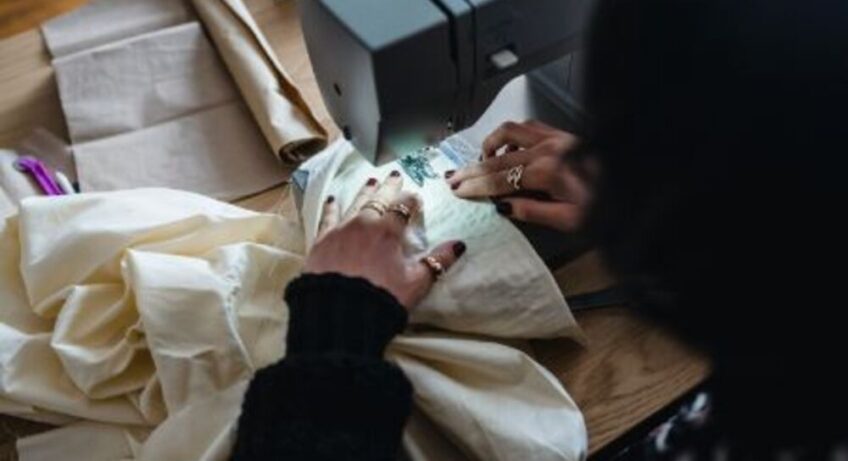An industrial sewing machine is ideal for business owners looking to take their craft to the next level, as it can handle various materials ranging from heavy fabrics and delicate laces.
When shopping for an industrial machine, it is essential to take into account its design and stitching speed as well as what tasks the machine will be used for.
Stitch Types
Industrial sewing machines feature multiple stitch types, such as straight, zigzag and serged seam stitching. Specifically designed to handle thick fabrics like denim and wool with its powerful motor, industrial machines offer versatility at its finest. Know more about embroidery machine for beginners.
Stitch type 602 – Flatlock with top covering thread offers a flatter, more comfortable seam while remaining elasticity-preserving, compared to its traditional 606 flatseam counterpart. Furthermore, its reduced thread consumption means it’s ideal for use hemming and stretchy garments such as knit activewear or shirts.
Stitch Speed
Industrial sewing machines are built for professionals, providing more power than domestic models. These professional machines often boast larger external servo motors with advanced energy-saving features to increase productivity.
Thicker materials like leather and upholstery fabric that traditional machines struggle to handle can be handled more quickly, helping your business run more smoothly. Be mindful of how many orders need fulfilling when selecting the ideal model.
Stitch Length
Stitch length is essential to creating a polished and professional-looking finished product. Different stitch lengths suit certain fabrics and thread types as well as serving specific purposes.
Modern industrial sewing machines feature stitch length setting controls either through dial or computer screen, which display stitch length in millimeters.
Lighter fabrics need shorter stitch lengths while denim requires longer stitches for optimal results. Basting requires using the longest stitch length possible (5mm or even up to 7mm on some machines) so the stitch can be removed more easily.
Stitch Width
Utilizing the appropriate stitch width helps avoid weak seams when working with thicker fabrics like leather and canvas. Most modern machines display stitch length in millimeters; older models may use numbers instead.
Straight stitches of length 0mm are often employed for locking seams and quilt piecing, while longer straight stitches are frequently utilized for machine basting and gathering purposes.
Needle Type
An industrial sewing machine requires specific needle types in order to function optimally, which differ from those commonly found on home machines in terms of point shape, shank length and eye size.
Cutting point needles feature sharp blade tips with strong shafts to reduce needle heat damage. They are recommended for synthetic fabrics, woven fabrics and some knit fabrics.
Leather needles feature sharp points to easily cut through leather and strengthened shanks to support their use on faux suede, vinyl or some other surfaces. This needle works great for leather, faux suede and vinyl surfaces.
Motor Type
An industrial machine should feature a powerful motor capable of handling heavy materials. Servo motors are significantly lighter and quieter than clutch motors while using up to 80% less energy overall.
Motors should be externally mounted for easy replacement when they break, saving costly repairs and minimizing downtime. Furthermore, purchasing from a professional dealership allows you to access technical support and repairs promptly.
Operating Costs
Sewing machine repair and maintenance costs are an integral component of running a sewing workshop business. Selecting high-quality machines can reduce these expenses and increase productivity.
No matter if you want to create women’s handbags or begin a sail repair business, having the appropriate machine is key to success. Do your research in order to select an industrial sewing machine suitable for your needs; even though higher initial investments might seem intimidating at first, their long-term benefits will soon outweigh them.
Warranty and Support
Quality warranties and customer support can help to reduce repair costs, thus cutting overall expenses and increasing productivity. Regular cleaning, lubrication, and inspection help to extend equipment lifespan while guaranteeing consistent performance over time.
Industrial sewing machines often carry higher upfront costs than their domestic counterparts, yet provide superior functionality for larger-scale projects. From rough fabrics to delicate lace, industrial machines have advanced motors that enable faster speed settings while offering features such as backstitching or presser foot lifting that help minimize labor and deskilling requirements.
